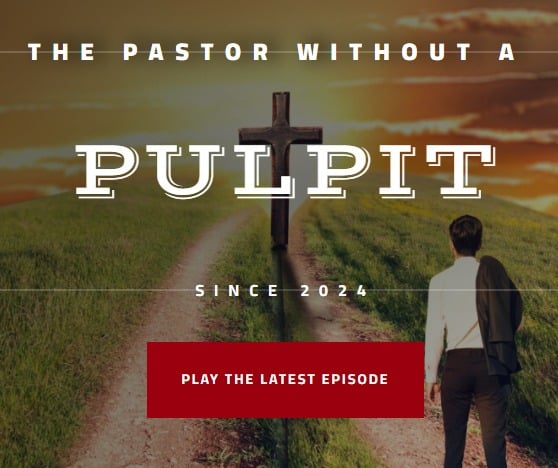
“We have procedures in place for obtaining Ebola testing on a suspect patient,” I-M Public Health Officer Dr. Rick Johnson.
October 16, 2014 (From Inyo-Mono Public Health Officer Dr. Rick Johnson)
Ebola Perspectives and Local Response
We are all saddened, and overwhelmed with all of the information available to us, regarding the Ebola situation. I will attempt to share what we know and don’t know, and close with what we are doing locally. Included will be specific guidance for you as you seek to apply all of this information to your own household. This situation, and guidance is rapidly changing, and we will keep you informed of any significant details that affect you personally.
The Virus
Ebola virus disease outbreaks have occurred in other locations in Africa since the 1970’s, but this is the first time in the West African region. This is also the largest outbreak, and the first to migrate into crowded urban areas. The virus exists in the forests of Africa, carried by non-human primates such as gorillas, chimpanzees, and dukars. Bats are also probably involved. The spread to humans comes from contact with this “bushmeat”, as hunting these animals and eating the meat is an essential source of protein for people living in these areas.
The Illness
Infected humans then spread the disease to each other through direct contact with virtually any bodily fluid. Bodies being prepared for burial through complicated cultural rituals are also extremely contagious for at least a few days. A very important fact is that a person is NOT contagious until they actually begin to show symptoms. The incubation period (time from exposure to becoming ill) is 2-21 days, usually 8-10 days. Initially, persons develop fever, headaches, muscle aches and weakness, and sore throat. After about 5 days, abdominal pain, vomiting and diarrhea begin. This is followed by a rash, and then overwhelming multi-organ system failure, accompanied by bleeding, and death. Fatality rates are estimated to be about 70%, with the young and old being most seriously affected.
Africa
A terrible tragedy is unfolding. Although there are officially over 8,000 cases, over 4,000 deaths, and about 300 healthcare workers who have died, the actual numbers are much greater. It is estimated that there may be up to 10,000 new cases per week soon, with estimates of up to 1.4 million cases by January. The much publicized efforts to provide treatment are futile unless there is an accompanying mass effort to prevent new cases from developing. The affected countries are Guinea, Sierra Leone, and Liberia. The Democratic Republic of Congo has a separate outbreak, and Nigeria and Senegal have successfully managed to snuff out small outbreaks. So, we are currently talking about only 3 countries.
The United States
4 individuals infected with the Ebola virus have been brought to the US for treatment in one of the special bio-containment units set-up after 9/11 specifically to deal with this kind of infection. All have under treatment or have recovered, and no staff or other contacts have become sick.
In addition, a resident of Liberia flew to Dallas after being exposed to the virus. He eventually got sick and died. Of special note is the fact that non of Mr. Duncan’s family and friends, nor the medics or healthcare workers who took care of him during his first hospital visit, ambulance transport, or ED visit – none of whom were wearing any personal protective equipment (PPE) have become sick. We are past the 21 days of risk for all of them.
Now 2 very dedicated and courageous critical care nurses who cared for him in his final days have also become ill. Although they are highly qualified and trained, the procedures and equipment they used were inadequate to prevent them from being exposed to infectious body fluids.
From this experience we can conclude that individuals are not contagious until they are symptomatic, and that the infection is not easily spread until later in the illness when both the increased presence of body fluids (vomit, diarrhea, sweat, etc.) and invasive procedures (breathing tubes, dialysis) puts medical staff at great risk.
California
There have only been 2 suspect cases with a high enough risk to be tested in the state, and both tests were negative. Social media reported a case of Ebola in “Riverside County, California”; however, the truth is that a suspect patient was being tested at the “Riverside Regional Medical Center”, which is actually in Newport News, Virginia. The test results were negative.
The Eastern Sierra
We have been in almost constant communication with federal, state, and regional partners for the last few weeks. Our priorities are to:
Ensure the safety of our first responder and healthcare worker community
Ensure the safety of our community in the Eastern Sierra
Provide high quality compassionate patient care if we have a suspect or proven case
The likelihood of a person presenting to our 911 system, clinics, or hospitals is very small; however, the Dallas experience shows that it can happen anywhere, and we need to be prepared to respond. We have been, and will continue to meet with all of our responder and healthcare community. We are providing training, guidance, and developing protocols for handling any situation that may arise. We have procedures in place for obtaining Ebola testing on a suspect patient. The expectation is that a suspect patient would need to stay in an Emergency Department for 1-3 days until a test result came back, and if positive, arrangements would be made to transfer the individual to a referral facility willing to accept a transfer.
Currently, the screening to identify a suspect patient involves only asking a few questions:
Do you have a fever and/or flu like symptoms?
AND
Have you been to any of these 3 countries (Guinea, Sierra Leone, or Liberia) in the last 21 days, or have you taken care of someone with Ebola disease?
If the answer to the second question is “No”, then it is business as usual. If the answer to both questions is “Yes”, then the person is immediately isolated, staff put on (don) protective gear, and public health immediately notified. In this way, the public’s risk will also be minimized.
What actions should you be taking?
Stay informed, but turn off the TV at some point!
Stay connected with family, friends, and neighbors.
I do not see any reason, or anticipate any reason, to change any upcoming travel plans you may have for the holidays or otherwise, unless you are going to West Africa!
If you need medical care for any reason, e.g., have or need an appointment at a clinic, are scheduled to have surgery, need to go or be brought to the Emergency Department, there is no reason to consider changing your plans because of Ebola concerns. Given the current situation, your risk of exposure under those circumstances is ZERO!
Create or update your personal preparedness kit – after all, we live in earthquake and wildfire country!
Get your flu shot – we know the flu is coming to the Eastern Sierra. We do not believe Ebola will be coming, but we have a plan if it does!
Wash your hands – frequently.
Take a deep breathe, enjoy the fall color, get ready for winter, and stay well!
For more information, go to:
HYPERLINK “http://www.cdc.gov/ebola” www.cdc.gov/ebola
Discover more from Sierra Wave: Eastern Sierra News - The Community's News
Subscribe to get the latest posts sent to your email.





















Approximate number of deaths per year in the USA:
From Drunk Drivers – 10,000
From Heart Disease – 600,000
From Cancer – 500,000
From Stroke – 125,000
From The Flu – 50,000
From Guns – 30,000
From Diabetes – 70,000
From Ebola – 1 (so far)
Thanks for the information and this well written article. This is another case in which I feel safer in the OV because it is geographically isolated and very low in population. We are also small enough to effectively and responsibly deal with the situation in contrast to large metro areas where there is already a sense of panic. I’m gunna say smaller is better when it comes to pandemic.
Mongo: Except we get millions of tourists a year — some who fly in to Mammoth Lakes. You don’;t know where any of them come from or who they’ve been in contact with.
And our local hospitals are not equipped to deal with Ebola. I’ve been to both NIH’s and Mammoth Hospital’s ER’s. By the time a patient with Ebola would be finally diagnosed, the whole ER in both hospitals would be contaminated.
The early symptoms of Ebola are fever, vomiting and diarrhea. Those are the same as a lot of different illnesses. Food poison, C-Diff, flue. It’s not given that the local hospitals could contain even one case of Ebola.
Look at Texas Health Presbyterian. They are a big hospital on the order of Renown in Reno. They couldn’t contain one patient.
It’s not easy and it’s not over yet.
Those hospitals mentioned had improper protocol in place.
My wife, an RN, has had to educate herself about Ebola. At this time there is no protocol at the nameless LA Metropolitan hospital in which she works. Just by virtue of this article, OV hospitals are potentially better educated than where she works. Also, lower population and poorer access lower the statistical probability for local spread of the disease. I personally would not consider driving from LA to OV with any fever or cold symptoms, iit would be too difficult. Mammoth airport handles five or so commuter flights a day that originate at other domestic airports. LAX handles about 700 a day, many international. We are not immune yet there is a considerable decrease in the likelihood that you will become infected in OV. Already reports of containment are only coming from lower population areas of Africa.
Dr Johnson knows that reaction and panic are ineffective at controlling disease. I know he is taking action by what he is saying in the article. Relax, and if there is a case, listen to the instructions and follow them. Learn how disease is spread and adjust your behavior. That is my plan.
Mongo: Texas Health Presbyterian had CDC protocols in place just like all hospitals in the U.S. do.
Do not confuse an abundance of concern for panic.
Sleep well Mongo…
Mongo, this is the latest from CIDRAP, which differs from what the CDC is saying.
http://www.cidrap.umn.edu/news-perspective/2014/09/commentary-health-workers-need-optimal-respiratory-protection-ebola
If a N95 mask is good enough as the CDC says, then why are the people taking care of the two nurses with Ebola, in Level 4 Biosuits with powered respirators?
The CDC continues to be way behind the curve. Maybe they should have used the money they spent on studying poop throwing monkeys, on developing a standardized, scientific protocol, on how hospitals should deal with Ebola should they encounter it. Instead they have to figure it out on their own with Google.
You might want to read the follow-up to your link:
http://www.cidrap.umn.edu/response-statements-falsely-attributed-cidrap-regarding-ebola-transmission
I don’t want to ruin your 0 for 6 score here Ken, so I won’t. But I agree with you on this one. Don’t tell Wayne!
Trouble: People want all warm and fuzzy. Ebola aint…
And it can’t be dealt with a La La La attitude.
Maybe Ebola will have a good effect on society. Maybe our gov’t will focus on real public safety issues. Instead of staking out out McDonalds drive thru for those deadly NLF beer drinkers. Or pulling over Aunt Suzie for risking all our lives because she can’t stop talking on the cell while driving. Maybe CHP should check all those flat landers temperatures while they wait for them to finish writing their speeding tickets anyway. And please remember to buckle up for your own personel protection.
‘
Trouble….With your post,it’s now OBVIOUS the one and only reason you post is hoping for….and getting negative reactions and comments…and attention from those dumb enough,like myself,to give you that attention you seek.Ebola good for society,huh ?….and still talking of the drunk drivers rights being “violated” in that McDonalds drive thru in Mammoth….When I woke up this morning,I turned on the channel 5 news,and the first story was a drunk driver in a pick-up truck that smashed into the back of a sedan last night,killing a 9 year old boy,and critically injuring his parents and 2 other siblings…..the same kind of accident that killed my 18 year old brother,and his passenger in 1971,both USMC soldiers, when they was stopped at a red light on his motorcycle….Getting DUI drivers off the road is a public safety concern and issue,don’t you think ?….Haven’t you got enough attention ALREADY for your posts and hoping for these type of reactions to what you have to say ?….or are you going to keep it up everytime LE makes a DUI arrest in this area….enough already…Go to facebook and make your comments supporting impaired drivers and their rights being violated if they happen to be caught BEFORE they kill innocent people.I think there is probably a site there that condones that behavior with other DUI drivers, besides yourself, looking for support,and possibly a way to garner money from others to help with their court costs coming up.
I’m more concerned about locals and visitors alike driving WAY too dang fast in our 25 mph zones throughout town.
I think there are a lot more vehicle vs pedestrian and vehicle vs bicycle accidents occurring than what is being reported.
Eastern Sierra Local…Your last sentence is true….much more to worry about….but I’m thinking President Obama can’t be blamed for those diseases,thus making them less to talk or complain about.
Say what???
I feel much better now.
(CNSNews.com) – Dr. Tom Frieden, director of the Center for Disease Control and Prevention (CDC), said during a telephone press briefing Wednesday that you cannot get Ebola by sitting next to someone on a bus, but that infected or exposed persons should not ride public transportation because they could transmit the disease to someone else.
People should be more worried about the latest trend of parents not vaccinating their children against standard childhood diseases- whooping cough, measles, mumps, rubella, polio, etc. In the US in 2014 alone there has been 594 cases of measles reported. The unscientific link of autism to vaccinations and the immigration of people to the US from nations without vaccinations are directly responsible.
That’s the real threat to public health, not ebola.
Thank you Dr. Johnson for this candid and reasonable explanation. Very refreshing in the midst of media panic and hyperbole.
Why don’t I have a warm and fuzzy feeling about going to the CDC website for correct advice on Ebola?